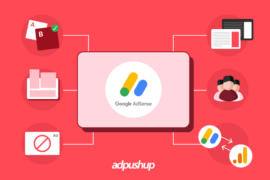What are your missing in your AdSense monetization strategy? We have covered top 10 tips that will help you boost your ad revenue by running tests.
Display advertising has always been the primary monetization strategy for web publishers mostly because it is extremely easy to set up. Since 2003, a majority of publishers have used Google AdSense to earn revenue through ads. However, many publishers have some important things lacking in their AdSense monetization strategy.
What are the Challenges?
Google AdSense is a cost-per-click (CPC) ad network that allows publishers to earn money from their website content. AdSense places ads to their websites based on the content and visitors’ interest.
Once the AdSense account is activated, publishers expect to earn a high monthly revenue. However, earning from AdSense without making optimizations is a myth! After Google AdSense is live on your site, continuous optimization and strategy are involved in getting the maximum revenue out of it.
Some publishers are earning fortune using Google AdSense, while some are struggling to complete even their basic $100 threshold. Hence, creativity, analysis, experiments, and optimization make a significant difference.
How to Improve your existing Adsense Revenue?
Let’s have a look at the best 10 strategies that can help improve your existing AdSense revenue.
- Do’s and Don’ts – When Google AdSense is Active
DO’S
Create unique content and use proper formatting which is easy to understand.
Optimize ads on the site in a way that does not annoy users. Use ads in preferable sizes and spaces like The Leaderboard (729*90) below the Header, Skyscraper (160*600) at the sidebar, Medium Rectangle (300*250) inside the content.
Create a well-designed and structured site that helps users to navigate easily.
Strictly adhere to Google AdSense Content and Site Policy and Guidelines
DON’TS
Never copy content from other sites. Google is very smart, and you will end up losing ranking and traffic on your website.
Do not add an excessive number of ads on your pages to chase more revenue. You will end up hurting the long term earning potential from converting your existing traffic to lost traffic.
Do not use tricks to encourage clicks like sending ads via email, malicious redirects, etc..
Do not link to sites that distribute illegal content or never get involved with invalid traffic sources. - Improve Content and User Experience
Creating original content is very crucial for the growth of your website. The formula is simple: better the content, more the users are likely to sustain on your site. This also translates to great user experience, resulting in higher organic ranking. All these factors are collectively responsible for earning more from Google AdSense.
Make sure to optimize website experience for different users (from different geography looking for varied offerings). Create a simple site architecture for better user interaction. - Implement Auto Ads
Auto Ads by AdSense leverages machine learning to scan your webpages and show ads in the right placements. It takes previous data, advertiser’s interests, and market knowledge to optimize and add new ad units.
Auto ads further have two different kinds of settings: Global Settings and Advanced URL Settings.
Almost everyone already uses Global Settings – applied to the entire site.
Advanced URL settings override the global settings and allow publishers to choose custom ad layouts for specific pages (URLs).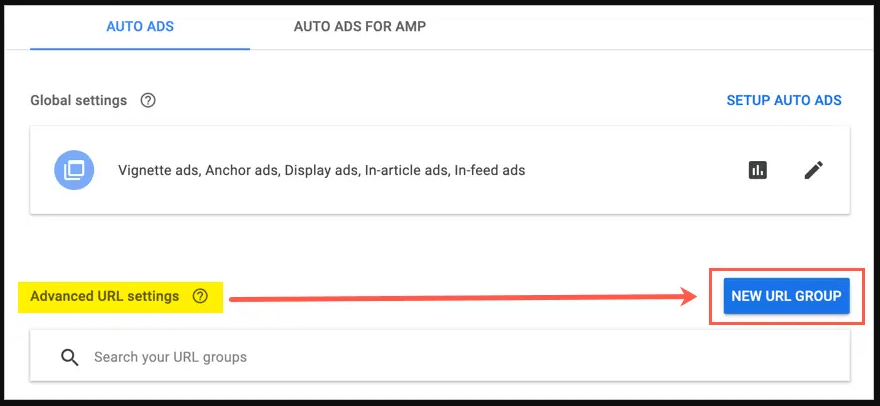
- Run Experiments
Running experiments allows you to compare one of your ad settings against its variation. A/B tests work by splitting your site’s traffic between the original ad setting and the variation. This helps in measuring performance better. You won’t need to make any changes to your ad or page code to run experiments.
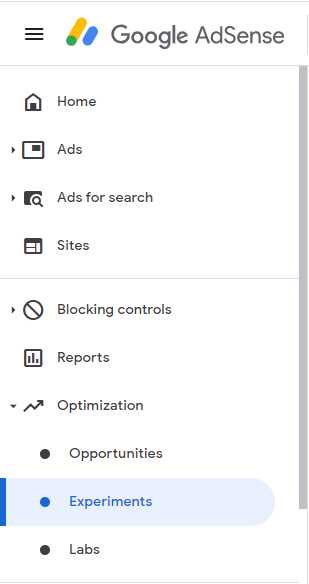
Running an Experiment helps you to make informed decisions about the ad placement that works best. Therefore, you create, monitor and choose the winner among your ad settings, thus exhibiting full control.
Google also keeps notifying about the experiment and opportunities to take action on them. Publishers are recommended to try these suggestions from Google to see an improved revenue number.
Experiments further, are of two types: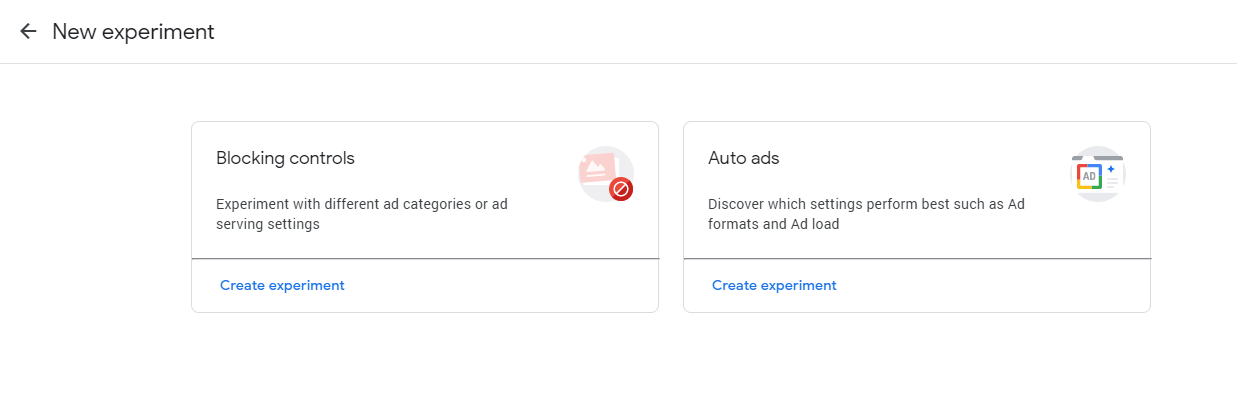
Blocking Controls:
AdSense Blocking Controls experiment allows publishers to test general ad categories, sensitive ad categories, and ad serving.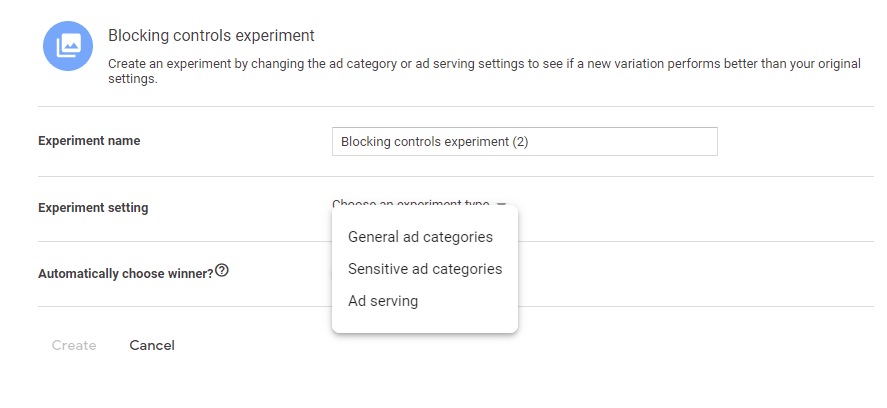
With General ad categories publishers can block ads from Apparel, Internet, Real Estate, and Vehicles. General category blocking is available for ads in a limited set of languages, regardless of the language of your site.
Sensitive ad categories can help block ads belonging to drugs, supplement, religion, casino, etc.
And with ad-serving settings, it is possible to control ad format and auction behaviors in AdSense, such as blocking user-based ads, or allowing additional ad technology vendors in your account.
Auto Ads:
Auto ads experiments let you test webpages with auto ads on and off. Based on this test, you can identify what auto ads placements are working better or worse than the ad units you placed on the web pages.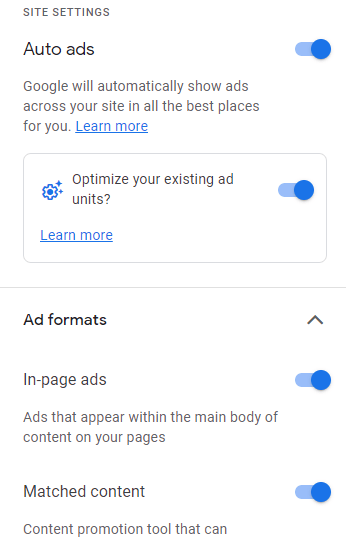
Remove ad space that you believe may annoy a user. In the screenshot below, I have removed 5 ad spaces which I thought weren’t working well for users.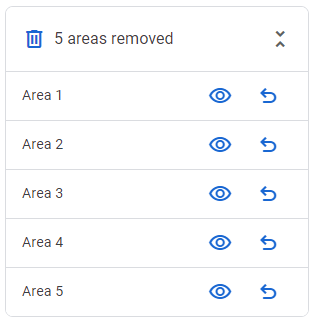
These experiments helped me increase the ad units’ RPM by 41%. Our work is just to run the experiment, after that AdSense automatically chooses a winner at the end of the experiment (usually takes 60-90 days).
However, you can stop an experiment in between and choose a winner. Once a winner is declared, AdSense automatically assigns the changes to that particular ad and winning type immediately begins displaying on your site. - Try AdSense for Search
For positive user experience, every website has a search bar on each web page. The search bar helps users to find the content they are looking forward to reading.
So, why not use Google AdSense for Search?
AdSense for Search helps you to boost your revenue (by showing Google Ads on the related search results) and at the top of it. It helps your readers to find all your related content from the site. You can also customize Google Search bar to make it look similar to that of a regular search bar.
The search results visible to the user looks like this: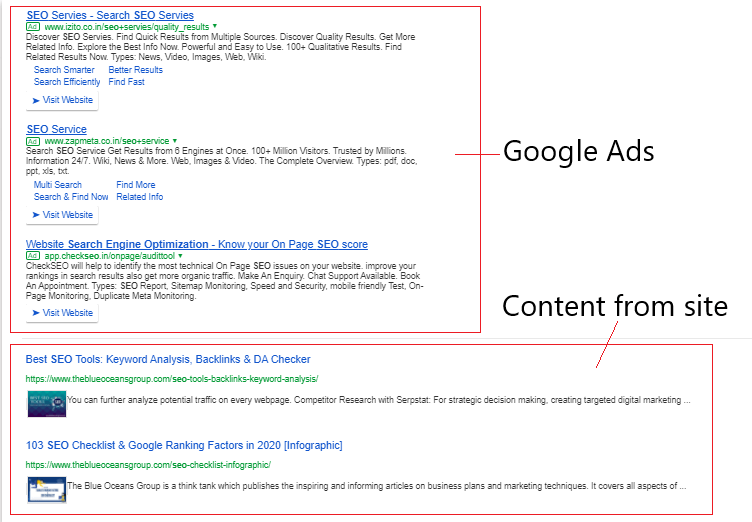
Google has announced that Shopping ads are now available for AdSense for search results and you will not require any code changes on your site.
Ultimately, it appears that Google is helping publishers earn more revenue.
If you have not activated AdSense for Search, it can be done simply in 5 minutes using the option mentioned below. Click on Get started with AdSense for search, apply the code on your site and you are all set to go.
Once you activate, you can now use AdSense for Search in two ways: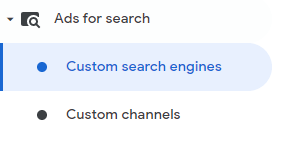
Setting up Custom search engines generally leads to very high RPMs and setting up Custom channels allow you to get better insights on what is working for you and what is not, therefore optimize this AFS properly. By placing an AdSense for the search box on your site, you’ll generate earnings from ad clicks made by users on the search results pages. - Use Link Units
Link Units is worth using on your site as it has the potential to earn massive revenue from leaderboards and rectangles. So, pay proper attention to link units. You can place these units up to three times on a page and analyse that you are getting a quick boost in ad revenue. Like the other ad units, Link units also have two options: Responsive and Fixed link ads (link ads sizes for horizontal are: 728 x 15, 468 x 15 and vertical link ad unit size are: 200 x 90, 180 x 90, 160 x 90, 120 x 90
Example of link units:
Link ad units are matched with webpage content to ensure clicks from users. In above examples, you can see AdSense link ads matching to webpage content and a possible pain point of a user. a part of matched content and display ads.
Try advertiser-preferred ad units and ad size
Just placing ad units on your site is not enough. Placing ad units at targeted spaces and selecting the right ad size matters. Your ad revenue mostly depends on the size of the ad on your site.
Try various ad units at different placements on your site that works best for you, but analysing and optimizing is the most important factor here. It would be best if you understand the ad behaviour, revenue generation, CPC, and RPM from the report generated and take action on it.
According to a study by SEMrush, sizes 729*90 and 300*250 are the most popular sizes that catch the eye, thus generating high revenue.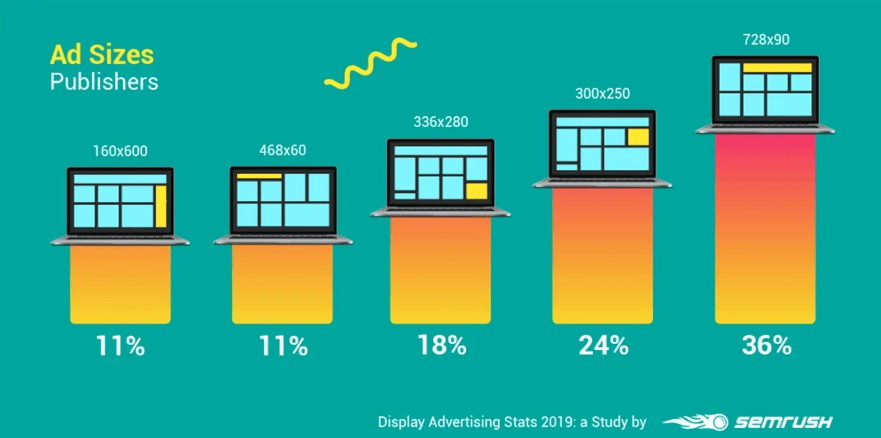
- Try Various Targeting Options
Now that we have learnt about choosing the right ad size, it’s time to focus on ad placement. Ad placement is the second most important factor to earn money from Google AdSense.
3 of the highest paying Google AdSense Placements on any website that can maximize your site’s ad impressions and clicks are:
Ads within content:
Putting your ad in the middle of the content is super effective as it is a great way to grab the attention of users. They might either click on the ad or engage with your site’s content through this ad placement.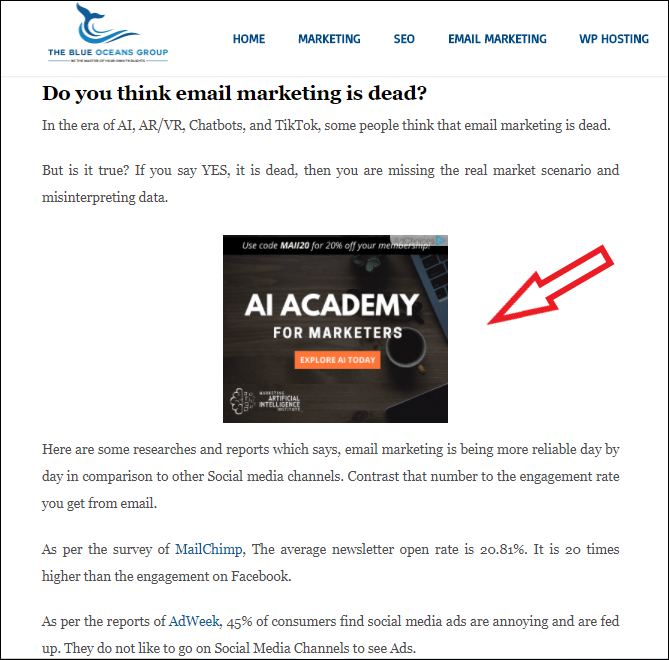
Under the Navigation Menu:
The space below the navigation menu and above the content with ad size 728*90 is the best placement to grab a user’s attention. Here, the ad is slim enough not to affect your site’s content but still seeking users’ attention to convince them to click the ad.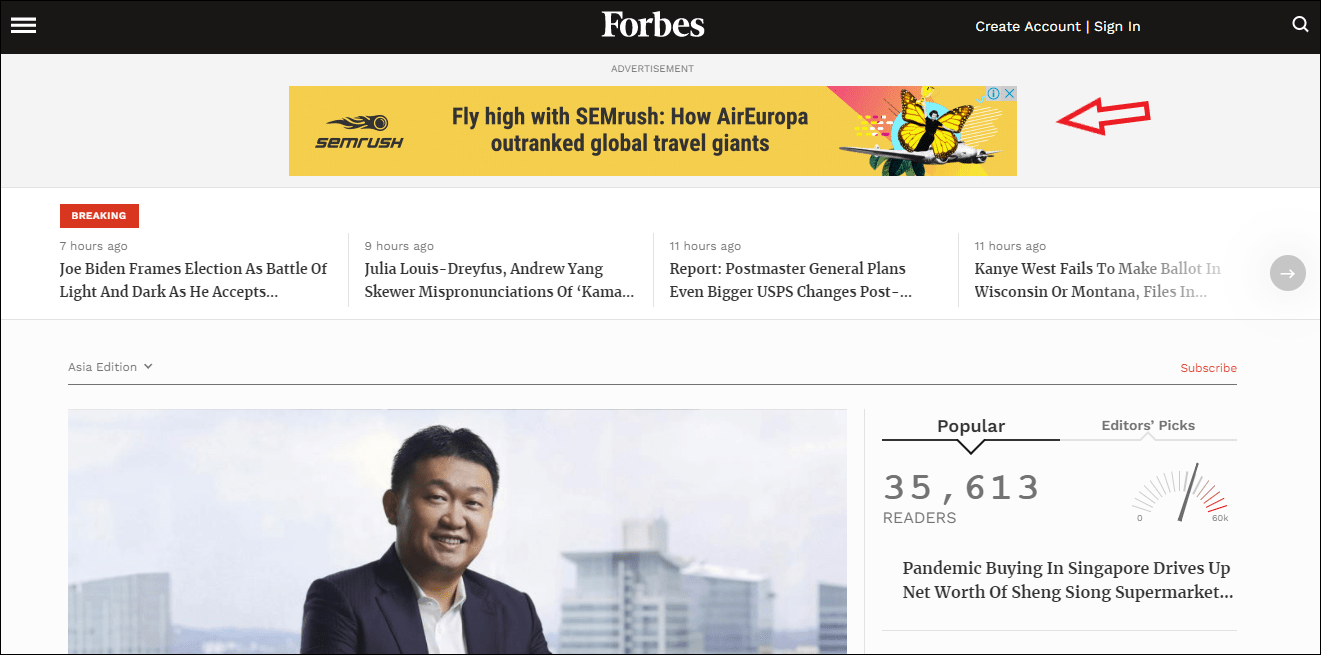
Sidebar whitespace
This includes the sidebar at either sides of the web page(left or right). Place skyscraper ads (long vertical ads) to generate lots of impressions and clicks because these ads are large and contain bold graphics to capture anyone’s attention. Ads in sidebars help publishers generate a lot of ad revenue.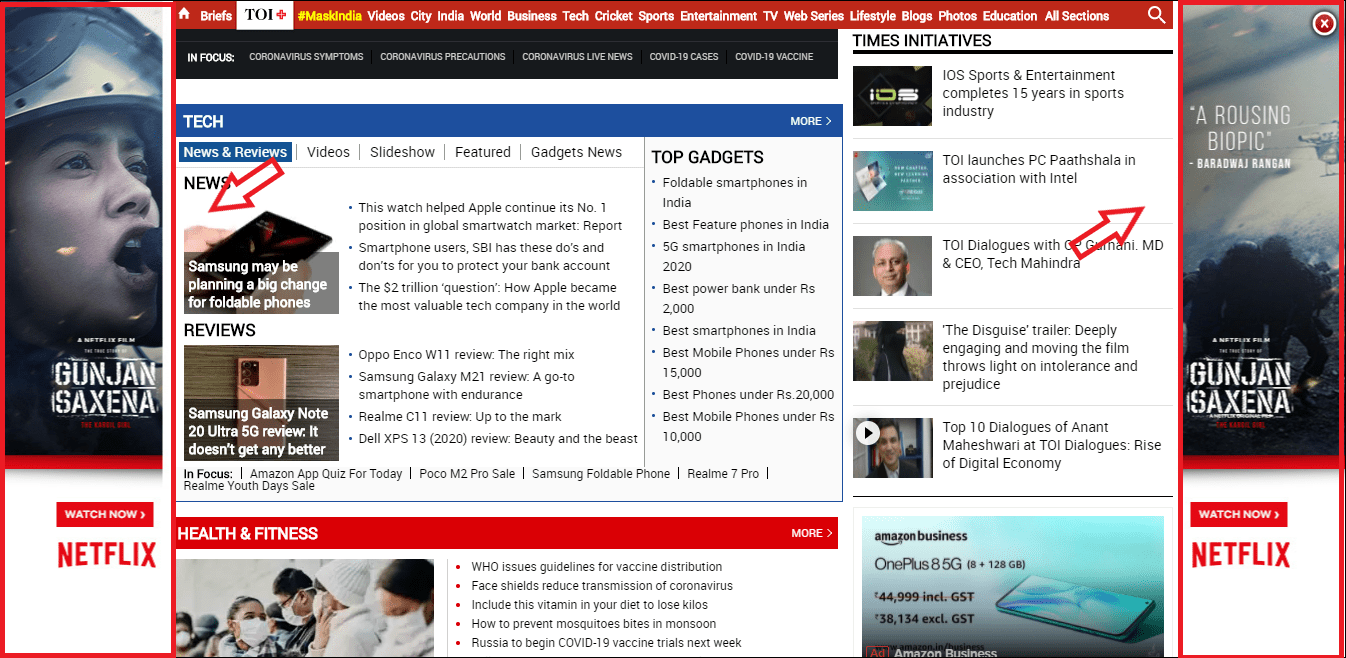
- Optimize Site for Mobile Device
Publishers should develop a multi-screen strategy to optimize their site for mobile. Since smartphone usage is increasing, a considerable percentage of the traffic visiting your site are probably coming from mobile search. Therefore, a mobile-first environment helps in getting a larger audience, thus boosting ad revenue. Publishers should routinely monitor their site’s ad experience and update it as per requirement.
These optimizations are more likely to be done on the technical front. Make sure that:
Your ads are responsive on different screens
The ad sizes adjust to screen sizes
The loading speed for your site is within 0-3 secs.
You can place the ad size 320*100 (above the fold), 300*250 (below the fold) as these are the best performing ad unit sizes as per Google.
Use responsive ad units for mobile especially
Note**: For better user experience, you can even create a separate mobile site that is different from your desktop version. This will help in improving search ranking. - Put Money into AdSense Arbitrage
AdSense arbitrage for most of us seems scary because we are known that buying traffic for a site will lead to a permanent ban from Google.
However, a little knowledge is always a dangerous thing.
According to Google’s actual policy, you can clearly see that Google says “you can use third party service to generate traffic to your site” but it is your responsibility to buy quality traffic that does not hamper your site performance. Make sure that the traffic you are buying is not bot or fake traffic that results in invalid clicks.
Keeping the above points in mind, we will now understand what AdSense arbitrage is. It is a practice that publishers use to create a profit margin. Now, it has a risk involved which can either boost your revenue or can result in complete revenue loss.
If you work on AdSense Arbitrage carefully, this will help in high ad revenue generation.
To get website traffic for AdSense Arbitrage, you can:
Run targeted ads on Facebook
Put your content on native advertising platforms like Taboola
Here are some more options to get arbitrage traffic. - Use Highest Paying Google AdSense Keywords
You might be aware that the more targeted traffic your blog has, the more you tend to earn from Google AdSense. Therefore, you need to analyse what niches you are writing in and what are the keywords you are ranking for because not all ads are going to pay you equally.
If you can use your content to drive clicks and conversions with high-paying keywords, then you will clearly see that your ad revenue has been boosted from the ads placement available on your site.
Final Thought
There are no set rules to earn or lose money from Google AdSense. You just need the right strategies to witness your revenue increase consistently. You can try the above shared strategies and may end up improving your earning potential. We recommend publishers to do proper analysis, experiments, and optimizations routinely.
We would also like to know the best AdSense monetization strategy that has worked for you. Please share your experiences in the comment box below.
FAQs
YouTube channels associated with duplicate AdSense accounts will not be approved and monetization will be turned off. New AdSense accounts should only be created through YouTube Studio. It won’t work on another site (such as the AdSense homepage).
Check out the following ways to make money with Google AdSense if you want to maximize your profits:-
i. Ensure your website is the right type for Google AdSense.
ii. Make use of different types of ad units.
iii. Implement AdSense Custom Search Ads.
iv. Make money on YouTube with Google AdSense.
We do not tolerate egregious behavior that negatively impacts the community. It means being respectful of your viewers, your fellow creators, and our advertisers. You may be temporarily denied monetization or terminated if you violate this policy.
This is a guest post by Sugandha Bansal. She is a Digital Marketing Entrepreneur and Co-Founder and CMO of The Blue Oceans Group with expertise in SEO, Google AdSense, Affiliate and Social Media Marketing. She inspires people, “Be the Master of Your Own Thoughts and Destiny”. Catch her on Twitter @sugandha_bansal

Shubham is a digital marketer with rich experience working in the advertisement technology industry. He has vast experience in the programmatic industry, driving business strategy and scaling functions including but not limited to growth and marketing, Operations, process optimization, and Sales.



![Top 12 Ad Networks in India Every Publisher Should Know [2024 Edition] Indian Ad Networks](https://www.adpushup.com/blog/wp-content/uploads/2019/09/undraw_Note_list_re_r4u9-270x180.png)

